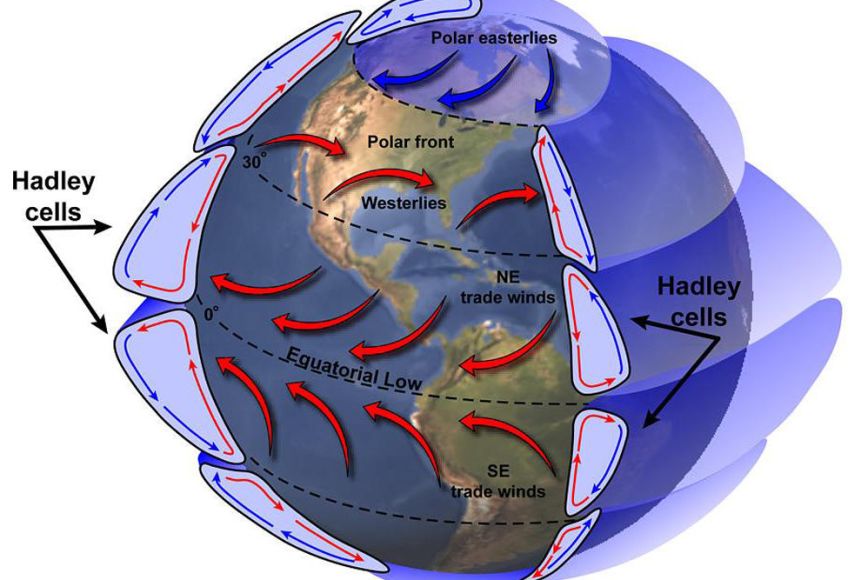Reading the Sky: How We Measure Weather and Why It Matters
Whether you’re packing an umbrella or planning a harvest, measuring the weather connects us to the rhythms of Earth.
The Dive
Imagine waking up and wondering, 'What’s the weather like today?' Now zoom out. Imagine you're a farmer, a pilot, a firefighter, or a city planner. That same question—What’s the weather like?—suddenly becomes essential. Our ability to answer it accurately depends on the science of meteorology: the careful observation of Earth’s atmosphere across time and space.
Weather doesn’t come from nowhere. It forms when air masses interact, when temperatures shift, when moisture condenses, and when pressure builds or drops. Meteorologists measure these changes constantly. They track temperature, humidity, precipitation, wind speed, wind direction, and air pressure. At the simplest level, we use tools like thermometers, barometers, rain gauges, and anemometers. But modern weather science goes much further.
Across the globe, weather stations, satellites, radar systems, buoys, ships, and aircraft gather data. Weather balloons, loaded with instruments called radiosondes, rise through the atmosphere sending back real-time data on temperature, pressure, and moisture. Every day, the National Weather Service processes over 210 million observations—each one a puzzle piece in Earth’s atmospheric story.
These measurements feed into powerful computer models that simulate the future. Meteorologists interpret those models, compare them with local observations, and use their understanding of regional patterns to make forecasts. Their work isn’t guesswork—it’s scientific inference based on patterns, principles, and a century of technological advancement.
But measurement isn’t just about prediction. It’s about scale. Weather happens at every level—from the swirl of fog around your shoes to hurricanes that stretch across oceans. Meteorologists divide their work into four scales: microscale (neighborhood weather), mesoscale (thunderstorms and tornadoes), synoptic scale (large systems like fronts and cyclones), and global scale (trade winds and climate patterns). Each scale requires different tools, different models, and different questions.
In the classroom, these measurements become a gateway into inquiry. Why is it colder today? Why did the wind shift? How much rain fell last week? Looking for answers teaches us to observe, record, analyze, and hypothesize—skills at the heart of science. Whether you’re graphing temperatures, building a barometer, or comparing satellite imagery, the weather becomes your laboratory.
Climate science builds on these same measurements, but over decades instead of days. When we track weather long-term, we uncover patterns. Those patterns tell us where droughts are forming, how heatwaves are shifting, or why sea levels are rising. From the El Niño cycle in the Pacific to the shrinking Arctic ice cap, climate data reveals how our planet is changing—and challenges us to respond.
All of this depends on observation. Just like Galileo’s telescope opened the skies to astronomy, the tools of meteorology—radars, satellites, thermometers, and more—have opened the atmosphere to measurement. Every forecast is a fusion of technology, teamwork, and decades of scientific progress. And at the center of it all is one very human question: What’s happening out there, and what should we do about it?
Why It Matters
Knowing the weather isn’t just a personal convenience—it’s a global necessity. Accurate forecasting saves lives in the path of hurricanes, guides pilots through turbulent skies, informs farmers when to plant, and helps cities brace for snowstorms, heatwaves, and floods. Measuring the atmosphere gives us more than a forecast—it gives us foresight. And in a world shaped by climate change, this foresight is more important than ever. The ability to observe, analyze, and act on weather data connects science to safety, and everyday decisions to global impacts.
?
Dig Deeper
An accessible explanation of weather basics, including how clouds and the water cycle work together.
There's an invisible force shaping our lives, affecting the weather, climate, land, economy, and just whether a flag looks majestic or not - we're talking about the wind! Today we’re going to go into the science of where the wind comes from and take a closer look at the major wind systems and pressure belts across the globe.
Related

Weather Wonders: Observing Clouds and the Water Cycle
Clouds aren’t just fluffy sky art—they’re scientific clues that help us understand weather, climate, and the invisible processes shaping our planet.

Climate Science: How Our Planet Keeps Its Cool… and Why It’s Getting Hotter
Climate science helps us understand how the planet stays warm, why it's getting warmer, and what we can do about it.

The Ozone Hole: A Wake-Up Call from the Sky
In 1985, scientists discovered a gaping hole in the ozone layer above Antarctica. It wasn’t just a science headline—it was a planetary red flag. And the world actually listened.
Further Reading
Stay curious!
